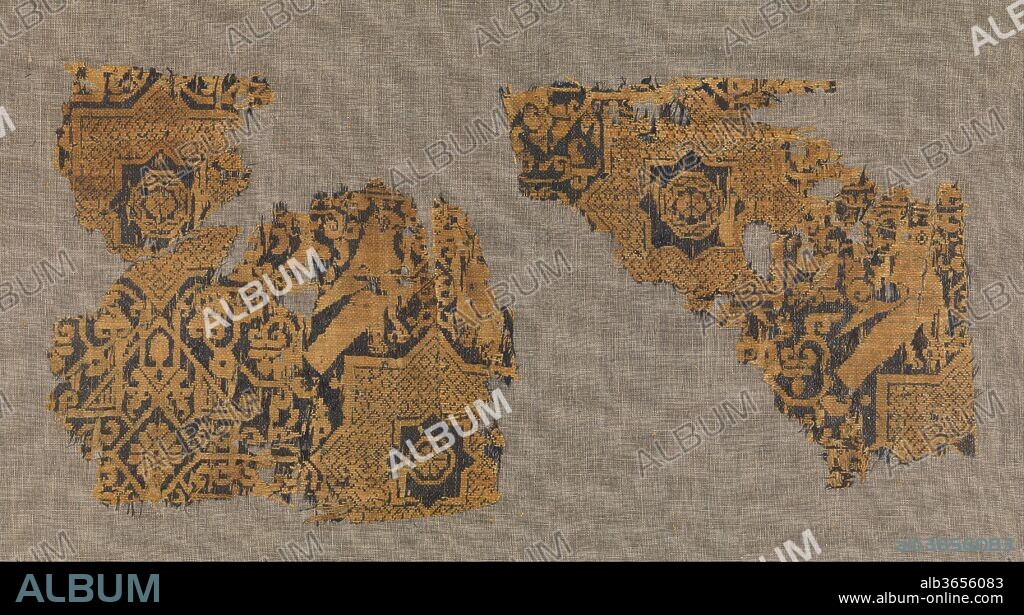alb3656083
Textile with a Pattern of Stars and Birds, Originally from a Cap

|
Añadir a otro lightbox |
|
Añadir a otro lightbox |



¿Ya tienes cuenta? Iniciar sesión
¿No tienes cuenta? Regístrate
Compra esta imagen

Título:
Textile with a Pattern of Stars and Birds, Originally from a Cap
Descripción:
Ver traducción automática
Textile with a Pattern of Stars and Birds, Originally from a Cap. Dimensions: Textile: H. 5 in. (12.7 cm)
W. 5 1/4 in. (13.3 cm)
Mount: H. 7 3/4 in. (19.7 cm)
W. 12 3/4 in. (32.4 cm)
D. 7/8 in. (2.2 cm). Date: 11th-12th century.
This textile was part of a cap, whose paper lining (46.156.11b) shows words of an inscribed text. The style of this script appears to be connected with the Ayyubid, late Fatimid or early Mamluk periods, while the silk samite technique is attributed to Seljuq Iran. The weavers employed two warps and two or more wefts to create the silk textile called samite. Here, eight-pointed stars, diamond-shaped motifs with foliate endings, and confronted birds compose the textile's intricate pattern.
This object was owned by Giorgio Sangiorgi, an Italian textile collector who had also inherited his father antiquarian activity at Palazzo Borghese in Rome. In 1946, it was acquired together with large part of his collection by his friend and dealer Adolfo Loewi, who sold it to the Metropolitan.
Técnica/material:
Silk; samite
Museo:
Metropolitan Museum of Art, New York, USA
Crédito:
Album / Metropolitan Museum of Art, NY
Autorizaciones:
Modelo: No - Propiedad: No
¿Preguntas relacionadas con los derechos?
¿Preguntas relacionadas con los derechos?
Tamaño imagen:
4318 x 2368 px | 29.3 MB
Tamaño impresión:
36.6 x 20.0 cm | 14.4 x 7.9 in (300 dpi)
Palabras clave:
ARTE ISLAMICO • ASIA • ATTRIBUTED TO IRAN • FRAGMENTO • FRAGMENTOS • IRAN • METROPOLITAN MUSEUM OF ART, NEW YORK, USA • SAMIT • SEDA • TEJIDO • TEJIDOS • TELAS
 Pinterest
Pinterest Twitter
Twitter Facebook
Facebook Copiar enlace
Copiar enlace Email
Email
